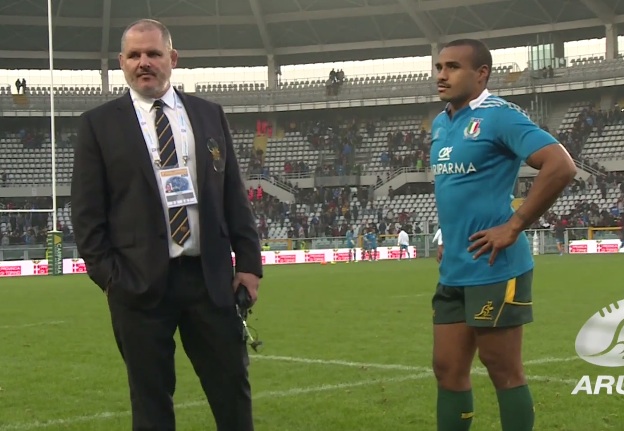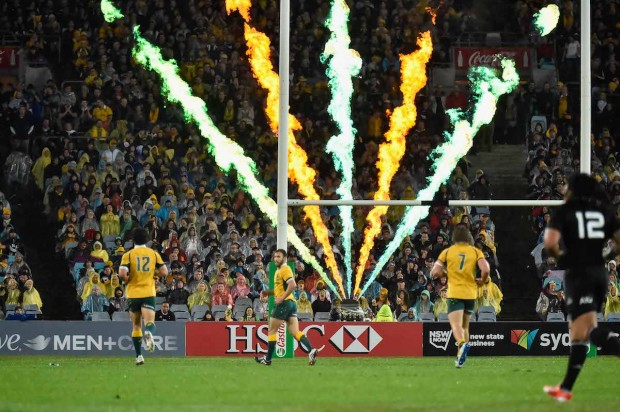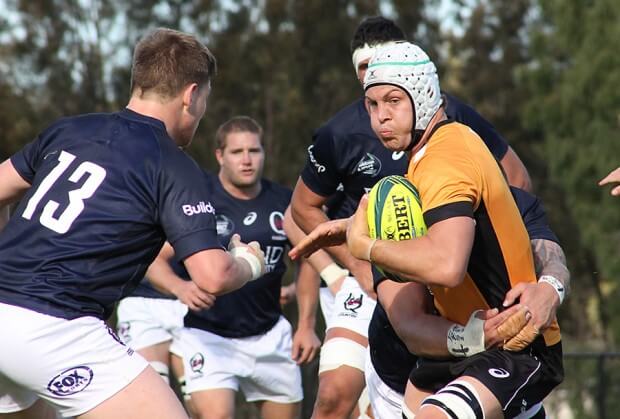In exactly a year, England will take on Fiji at Twickenham in the first match of the Rugby World Cup. So I thought I’d take advantage of the break in the test rugby schedule to take a step back and look at the bigger picture for the Wallabies. This, the first of two articles, focuses on where the Wallabies have come in the year and a bit since Ewen McKenzie took over as coach; the second will look on what we need to do over the next year to be a real contender this time next year.
The first six months
The McKenzie era has been like a dramatic play. In the first act, the Wallabies got blown off the park by the All Blacks in winter 2013. It was a foreboding beginning.
In the second act, the team appeared to progress nicely. Players like Scott Fardy, Quade Cooper, Tevita Kuridrani, and Matt Toomua all seemed to find a niche. By the end of a largely successful winter tour of 2013, the team and its structures looked fairly settled. Cooper seemed to have found a new maturity at 10 and a good combination with the unflashy Toomua at 12.
The forwards focused heavily on counter-rucking and disrupting opposition ball, where a back-row of Fardy, Ben Mowen, and Michael Hooper flourished. And in the backs, the patterns became much simpler. You knew, when the Aussies won lineout or scrum ball, that Cooper was going to exercise variations on the same pattern: the blind winger, 12, and 13 all running lines just off his shoulder, with the threat of the long ball to Folau further out. It was all so effective.
Results followed. It’s hard to remember now, but Australia walloped Argentina in South America, were unlucky to be pipped by England (with some more than dodgy reffing involved), thrashed Italy, thoroughly outplayed Ireland, beat Scotland, and recorded a win over a very good Welsh side. All away from home, often in greasy conditions not unlike what we’ll see next year.
More than the results, there was something very pragmatic about the way the Aussies were playing. The fundamentals looked strong, the patterns of play were straight-forward, execution was good. This opened space for guys like Cooper and Israel Folau to add a little flair and exploit the opportunities.
2014
It’s hard not to get the impression that, if not being worse than the spring tour side, the Wallabies currently aren’t playing any better. Sure, there have been plenty of wins. The French and South Africans are no slouches. But all of them have been at home. And both in Perth and the Gold Coast, Australia could easily have lost if not for some helpful refereeing.
More to the point, the team as a whole looks a lot less assured, less mature in its play. The kicking display in Perth was atrocious. Discipline has become a major issue. The lineout is missing Mowen’s guidance a huge amount. The form of individual players has fluctuated wildly. Add it all up, and the team just isn’t playing with the confidence that the people around them can do their job too.
The team seems to have forgotten the benefits of holding the ball, displaying patience, and waiting for the opportunity to appear. The first three minutes of the test against Argentina was notable for how rarely we’ve seen that this year (at least not in a gold rather than sky blue jersey). This all might sound a bit doom and gloom, but let’s not forget: the Sydney test was at home, and the All Blacks played with 14 men for fully a quarter of the match. If the Wallabies couldn’t win that game, it’s hard to see how they can be serious World Cup contenders.
On the coaching front, the honeymoon for Ewen McKenzie is over. The decisions to play a Nic White-Kurtley Beale combination against the All Blacks, plus Adam Ashley-Cooper instead of Kuridrani at 13, were mistakes with major consequences. Some areas of the Wallaby game have improved dramatically, particularly goal kicking and, to a lesser extent, the scrum. But McKenzie’s failure to develop an overarching strategy that clearly builds upon what we saw in November 2013, for all his ability to say the right things, is concerning.
Off the Field
The ARU has certainly got some things right. Resurrecting the NRC was a good move, though what benefit is obtained by skewing the rules to emphasise areas where Australian rugby is already strong is not clear to me. Telling James O’Connor to shove it was also wise, sending a clear and overdue message. The move to introduce sabbaticals was also smart, no more than getting out in front of existing economic trends. But it does beg the question whether it could have all come earlier; maybe some notable absentees might have stayed put.
More could be done, however. A stronger representation to the IRB (now “World Rugby”, go figure) on the market forces surrounding the sport is critical at this time. If the IRB cannot be convinced to get involved, with all the money in France and a 26 game season plus finals, it’s certainly possible that in ten years rugby will look like soccer: the power with the clubs and test matches – the pinnacle of the game, historically – sidelined. Australia and New Zealand, massive contributors to the sport both historically and today, will lose out.
Next up, we’ll look at the next twelve months. What do the Wallabies have to do to get themselves back on track?



